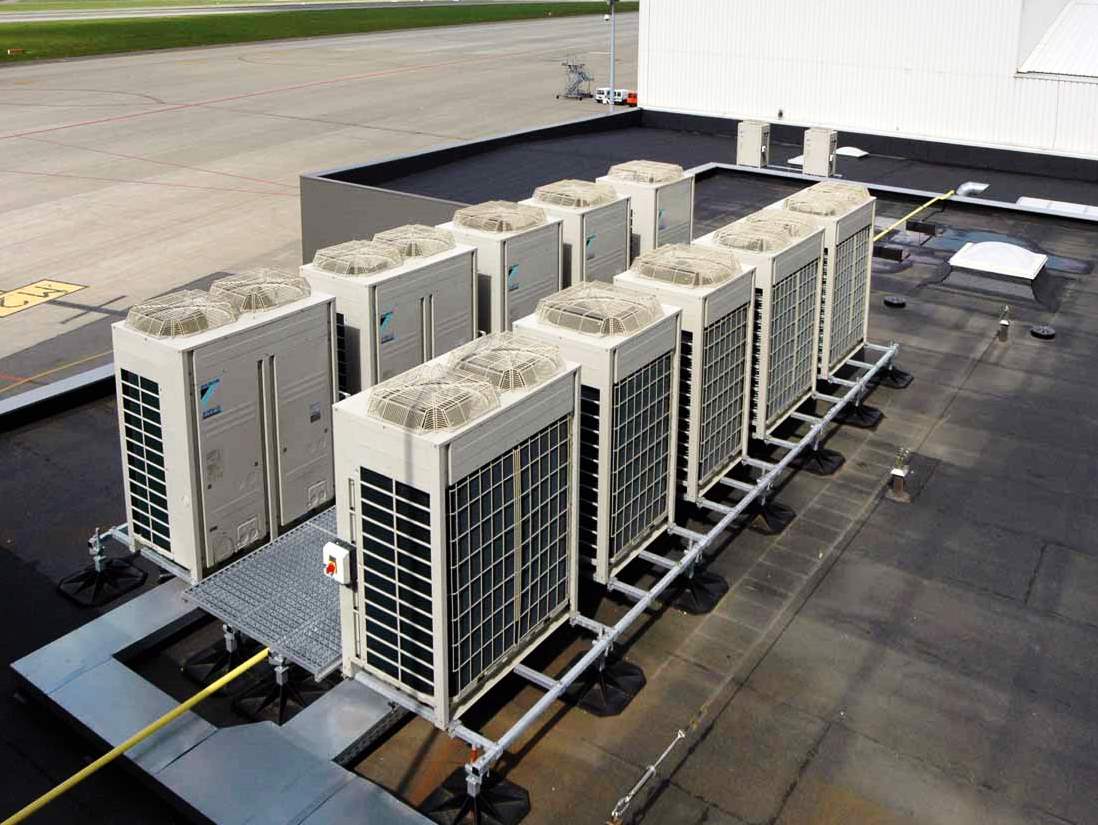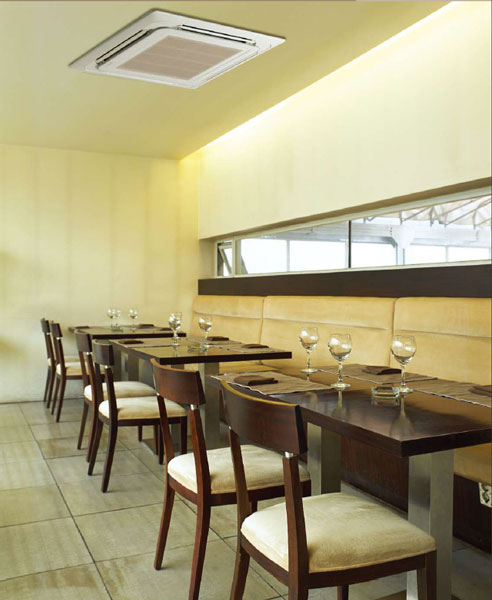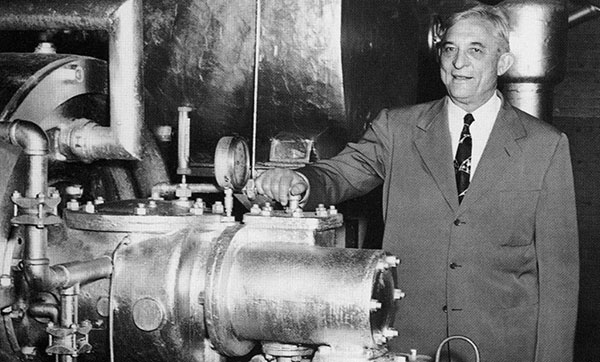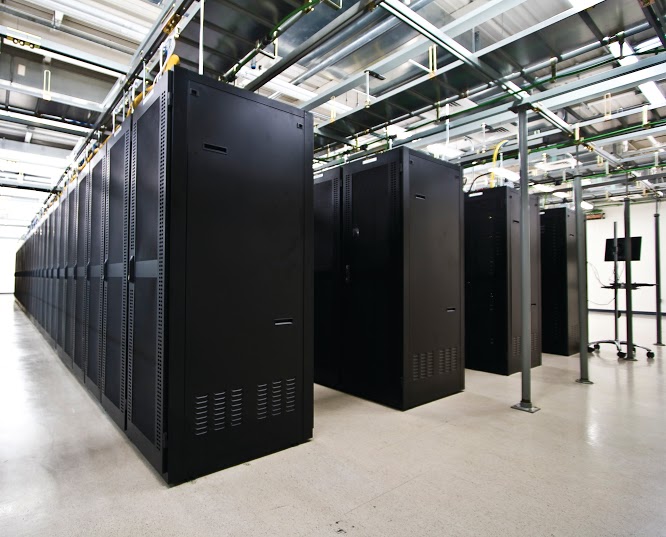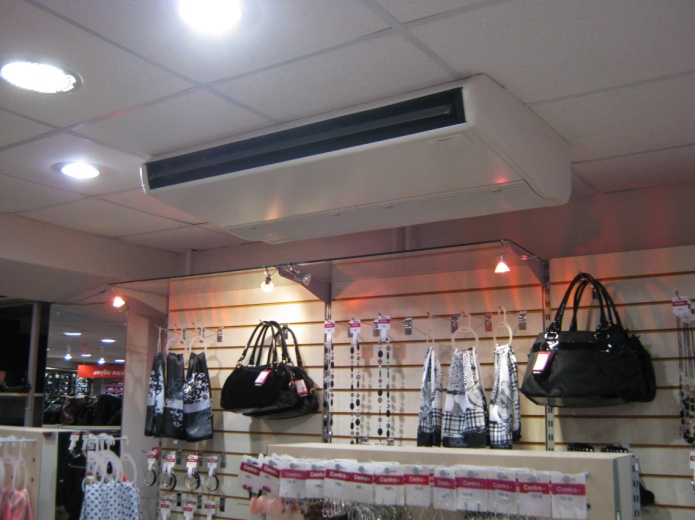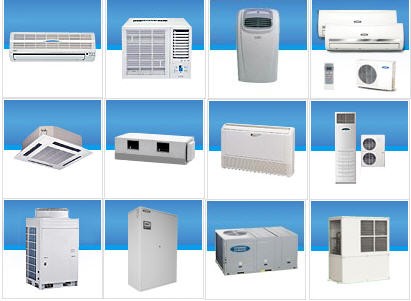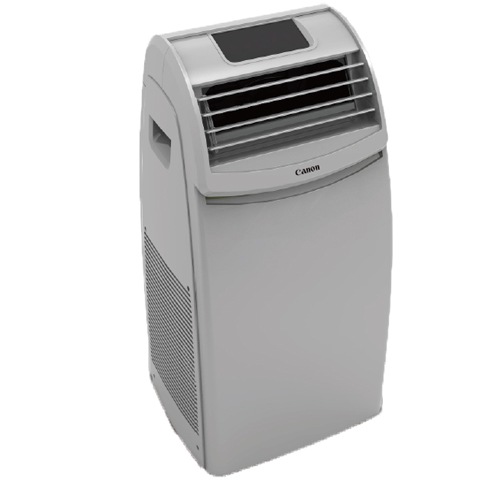For cooling and heating premises in private houses and apartments, household air conditioners are installed, which differ in their design features.
- Monoblocks and split systems
- The design of the outdoor and indoor units of the split system
- Outdoor unit of air conditioner
- Air conditioning compressor
- Indoor unit of air conditioner
- Types of split systems for an apartment
- Installation and connection of the air conditioner
- Refueling the air conditioner
- Signs of a freon leak
- Air conditioner selection
- Popular brands
Monoblocks and split systems
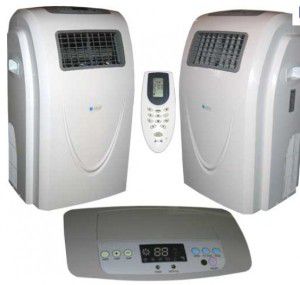
Less demanded are monoblock structures with the main working units in one building - window and mobile air conditioners. Due to the simplification of the design, they are cheaper, but have a number of disadvantages:
- loud noise;
- dimensions;
- inconvenient location in the room;
- lack of many convenient features.
The more popular household air conditioners for an apartment are split systems, in which the internal working elements are distributed in two blocks - an external and an internal one. Both modules are connected by a thin freon duct, which consists of gas and liquid pipes.
The design of the outdoor and indoor units of the split system
Outdoor unit of air conditioner
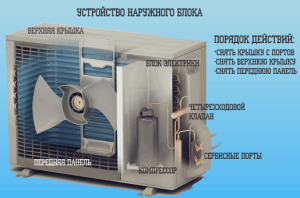
The following components are taken out to the outdoor (street) module:
- compressor - the main structural element involved in the transfer of heat through a change in the working substance;
- four-way valve - is responsible for switching to cold / heat (installed in devices operating in heat pump mode);
- heat exchanger-condenser - here heat is removed from the gaseous freon for its subsequent transition to a liquid state;
- capillary tube - connects the discharge and suction lines and is a pressure regulator;
- fan - removes the air cooling the condenser through the louvers of the casing and the outlet grille;
- freon filter - prevents small debris from getting inside during installation;
- choke connections - the place of connection of the inter-unit refrigeration line.
Drainage is also drained from the outdoor unit to drain the condensate. In heating mode, it is drained by gravity from the pallet through the drain pipe. The outdoor unit is mounted on a special mounting frame to the wall of the building outside.
Air conditioning compressor
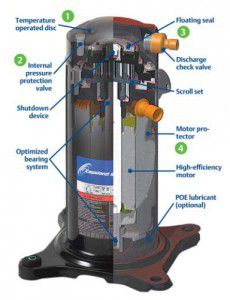
The compressor is usually covered with soundproofing. If it has inverter control, that is, it is able to change the frequency of the motor, an electronic control board is installed in the outdoor unit, which is responsible for the extensive functionality of the device.
As a rule, SCROLL scroll compressors are installed in household air conditioners up to 3.5 kW. They run quietly and provide reduced starting current. For models up to 5 kW, reciprocating compressors with crankcase heating are installed.
Scroll compressors for domestic air conditioners are designed according to the principle of a single-shaft displacement type design. Two spirals are inserted into each other. One is mobile, the other is not. Uniform steam injection occurs due to the rotation of the movable spiral around the stationary axis, but at the same time it does not rotate around its axis. One-way movement is provided by an eccentric shaft.
A piston-type compressor for a domestic air conditioner is characterized by a change in the volume of the working cavities due to the reciprocating movements of the pistons in the cylinders. But such models are distinguished by increased noise and vibration during operation.
Scroll compressors for domestic air conditioners are used less often, since their cost significantly exceeds the price of reciprocating ones, and manufacturing is a more complicated process.
Indoor unit of air conditioner
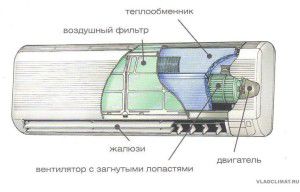
Other working elements are located in the internal block:
- evaporator - is responsible for the transition of freon from the liquid to the gaseous phase;
- fan - moves air to the evaporator;
- lattice - air is drawn through it;
- filter - removes small particles of dust and other fractional inclusions;
- sash guides and blinds - regulate the direction of air movement;
- temperature sensors - are responsible for turning the compressor on and off.
All connecting communications between the units, the freon line and electrical cables, are usually closed in a decorative box or laid in a gutter in the wall.
Types of split systems for an apartment
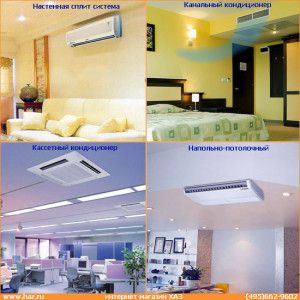
The most popular household air conditioners for an apartment are wall split systems. The internal block of such a two-piece device has the shape of a rectangle. It is hung on the wall on a special mounting plate. But this is not the only type of chiller for a residential area.
For rooms with high ceilings that do not have extra space, you can buy splits with a different design of the indoor module. Duct, cassette, floor-to-ceiling and column splits can replace a household wall-mounted air conditioner in an apartment.
The only drawback of most of these systems is the impossibility of supplying fresh air to the room. The exception is powerful high-pressure models of duct splits, which are more reminiscent of a hybrid of an air conditioner and a supply unit. With their help, it is possible to organize the flow of street air in 20-30% of the total volume processed by the system.
Not so long ago, high-pressure channel air conditioners of increased power appeared at the company MDV - they are able to supply 100% of fresh air to the residential area.
Multi-split systems are also installed in apartments or private houses, where it is necessary to simultaneously cool several separate zones at the same time, so they can also be attributed to household air conditioning devices.
But still, household wall-mounted air conditioners, despite the power limitations, are more customary for installation in residential premises. Manufacturers focus more on improving just such models. They work quieter in comparison with mobile and window monoblocks, and also consume less energy when compared with duct, cassette, column and floor-ceiling devices.
Installation and connection of the air conditioner
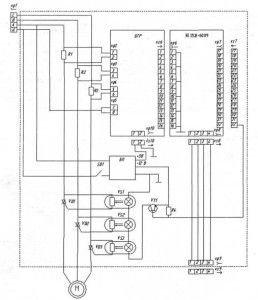
The guarantee of the long-term operation of the cooling unit is its high-quality installation and subsequent regular preventive maintenance, which, according to the rules, should be carried out at least twice a year.
As a rule, the installation of household air conditioners is carried out according to the schematic diagram attached to the device in the service documentation. It contains the symbols for the electrical connections of the external and internal blocks of the split system, as well as all its components.
The components of the refrigeration circuit are electronically controlled. In case of improper installation of the household air conditioner and incorrect laying of the electrical networks supplying it, the device will not work, or if it breaks down - the control board will burn out.
Typically, a low-power household air conditioner circuit has a single-phase connection, and a three-phase one with a higher power. Each device is supplied with individual documentation that cannot be applied to other air conditioning systems.
Regarding the power of the device, there are two types of powering the device:
- into an already operating power grid;
- by connecting a separate supply line.
When connecting a split system to an existing network, aluminum wires with a small cross-sectional area are not used. Be sure to provide grounding and protection against vibrations and overloads. But a more preferable option is powering from a separate line.
You can find a diagram of a household air conditioner before installing it not only in the manual, but also on the unit itself or on the inside of the lid. In extreme cases, the device model is written out and information is obtained from the distributor.
Refueling the air conditioner
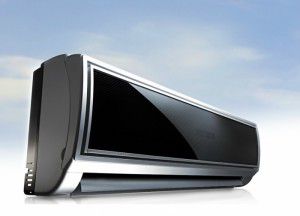
The preventive maintenance of the split system includes a standard set of procedures:
- cleaning and disinfection of indoor unit filters;
- flushing the outdoor unit;
- diagnostics of operating parameters;
- replenishment of refrigerant losses.
For splits, the norm is 4-8% Freon leakage in a year and a half, therefore, to maintain the refrigerant level required by the manufacturer, it is necessary to refuel the household air conditioner, which is carried out at least once every two years.
This process can take place in different ways. For most air conditioners operating on R-22 freons, just a small refueling with working gas is enough. New split models are already switching to ozone-safe types of freons - R-410A and R-407C. These household air conditioners will need to be charged completely.
In the second case, the specialist will first evacuate the system, and then connect the bottle with freon and pour in the required amount of the substance, focusing on the data of the nameplate and the indicators of the scales.
Signs of a freon leak
An attentive user should know what to call the wizard should be in case of "strange" behavior of the cooling device. This is necessary if:
- the air conditioner does not cool well or takes a long time to reach the desired values;
- on the external module, oily black smudges or freezing of the liquid and gas taps are clearly visible;
- vibrations and noises appear during compressor operation;
- the device goes into error code mode or does not turn on at all;
- the device smells like burning.
In all these cases, the usual refueling of household air conditioners with freon may be required.
Air conditioner selection

In order for a home air conditioner to work properly, and the user does not overpay for additional functionality, it is necessary to correctly take into account all your needs. What are the criteria for choosing a household air conditioner for an apartment?
- When calculating the cooling capacity, the area of the room and all heat gains from lighting, household appliances, roofs, walls, windows, doors, people are taken into account. On average, 1 kW of power is taken for 10 m² and about 30% of them are added to the results obtained as a reserve;
- Be sure to take into account the purpose of the room. For rented apartments or summer cottages, it is easier to buy a mobile air conditioner, since when moving it can be easily dismantled and taken with you;
- Be sure to look at the shape of the room when choosing a household air conditioner. Wall splits are ideal for standard square or rectangular rooms. If the room has the shape of an elongated rectangle (such are the case in old walk-throughs in the Khrushchev buildings) or some other non-standard configuration, then it is better to buy a floor-ceiling system, in which air, when wall-mounted, is blown out along the walls and passes through the entire room, even penetrating hard-to-reach areas;
- An important factor is the height of the ceiling. If its value is less than three meters, then a wall split is suitable, everything that is higher requires a cassette or channel system;
- The choice may be influenced by the availability of different modes and functions. With minimal requirements for the operation of the air conditioner, when it only needs cooling in the summer for several weeks, you can do with the simplest device without a powerful filter system and a set of complex electronics;
- Is there any way to choose a household air conditioner for daily work? If there is a need for daily cooling in the summer and heating in the cold season, it is better to buy an inverter model with smooth control of the compressor. They are more hardy and economical.
In each individual case, it is advisable to consult with the managers in the HVAC store or installers who will install the household air conditioner in the future.
Popular brands
When choosing a refrigeration machine for an apartment, a trademark can be a decisive factor. Many people pay attention to the rating of manufacturers. Household air conditioners of Japanese brands and assembled in Thailand, Malaysia, Germany, Denmark, Turkey, Italy are considered to be of higher quality and reliability.
Chinese split systems have won less consumer confidence due to the fact that they have much worse quality plastic, components and the assembly itself. An exception may be brands of household air conditioners such as MIDEA, which are equipped with a compressor of the company TOSHIBA.
The most reliable air conditioners are DAIKIN and MITSUBISHI ELECTRIC. They are premium climate equipment.
Household air conditioner brands such as HITACHI, DELONGHI, FUJITSU GENERAL, MITSUBISHI HEAVY and PANASONIC occupy the middle niche, being a business-class technique.
All Chinese and Korean manufacturers belong to the economy segment: Lg, DANTEX, SAMSUNG, Gree, HAIER, AKIRA and others, which are loved by the Russian consumer for their cheapness in comparison with air conditioners of a higher level.

